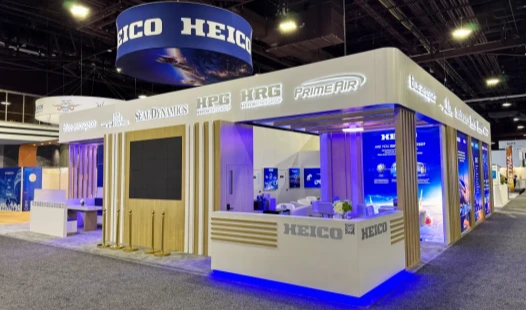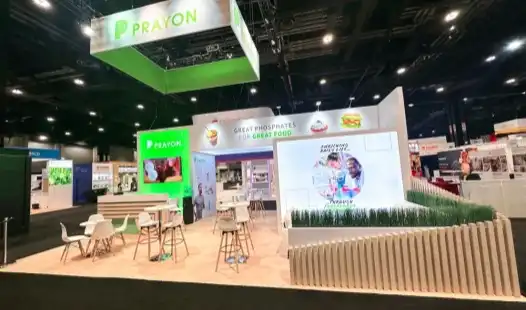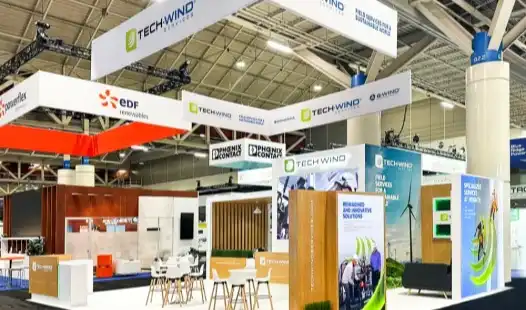Crafting a Narrative for Your Exhibition Space
The foundation of storytelling in booth design lies in crafting a compelling narrative that aligns with your brand identity and marketing objectives. This narrative should guide every aspect of your booth's design and layout, creating a cohesive and immersive experience for visitors.
Identifying Your Core Message
The first step in crafting a compelling narrative for your exhibition space is to clearly identify your core message. This involves understanding your brand’s essence and the primary idea you want visitors to remember. Consider your company’s history, mission, and values, as well as what makes your products or services unique in the marketplace.
Ask yourself questions like: What challenges do our offerings solve? How do we differentiate from competitors? This foundational message will serve as the guiding principle for all booth elements, from graphics and lighting to interactive features. A well-defined core message ensures that every aspect of your booth communicates a consistent story that resonates with attendees.
Developing a Storyline
Once the core message is established, the next step is to develop a storyline that will engage and captivate your target audience. Think of your booth design as a journey for visitors, where each area or feature contributes to the unfolding narrative. This could take the form of a transformation story, a problem-to-solution journey, or a day-in-the-life scenario demonstrating your product’s benefits.
The storyline should guide visitors naturally through the booth, creating moments of discovery and engagement. By designing the booth with a coherent narrative arc, attendees are more likely to connect emotionally with your brand, absorb key information, and leave with a memorable impression that extends beyond the trade show.
Creating Character and Conflict
A strong narrative is built on characters and conflict, which make stories relatable and compelling. In booth design, your product or brand can act as the hero, addressing a specific problem or challenge faced by your target audience. Alternatively, visitors themselves can be positioned as protagonists, with your brand serving as a mentor, guide, or enabler. This storytelling approach encourages attendees to see themselves within the narrative, making the experience more immersive and personal.
By incorporating recognizable conflicts, challenges, or opportunities, exhibitors can foster emotional connections, encourage exploration, and create a memorable booth experience that highlights the value and relevance of their offerings.
Visual Storytelling Techniques in Booth Design
Once you have your narrative in place, it's time to bring it to life through visual storytelling techniques. The visual elements of your booth should work together to create a cohesive and immersive environment that supports your narrative.
Using Color and Imagery
Colors and imagery play a critical role in visual storytelling within booth design, as they set the emotional tone and reinforce the narrative. A carefully selected color palette can evoke specific feelings, guide visitor focus, and strengthen brand identity. High-quality graphics, photographs, and illustrations should align with the story you want to tell, supporting key messages and creating a visually cohesive environment.
Large-format prints, digital screens, or projection mapping can serve as impactful focal points, drawing attention and enhancing the immersive experience. Thoughtful visual design ensures that visitors not only understand your narrative but also remember it long after leaving the booth.
Incorporating Symbolism and Metaphors
Symbolism and metaphors add layers of meaning to your booth’s visual storytelling, helping convey complex ideas in an intuitive and memorable way. Exhibitors can use familiar symbols or create custom icons to represent key aspects of the narrative. For example, if the story emphasizes growth, innovation, or transformation, elements like trees, pathways, or butterflies can visually communicate these concepts.
Metaphorical props, décor, or interactive displays reinforce the narrative without relying solely on text, creating a deeper emotional connection with visitors. By integrating symbolism thoughtfully, exhibitors can elevate the storytelling potential of their booth and leave a lasting impression on attendees.
Creating a Sense of Journey
Designing the booth layout to create a sense of journey helps guide visitors through the narrative in a structured and engaging way. Physical elements such as pathways, arches, partitions, or elevated platforms can divide the booth into distinct “chapters,” allowing visitors to experience the story progressively. Each area should reveal a new facet of the narrative, maintaining curiosity and engagement.
Lighting, sound, and spatial arrangement can further reinforce the flow, highlighting key moments and creating natural transitions. This journey-focused approach encourages exploration, sustains visitor attention, and ensures that attendees fully experience the intended story, making their visit memorable and impactful.
Interactive Elements and Technology in Storytelling
To truly engage visitors and make your story memorable, incorporate interactive elements and technology into your booth design. These features can help bring your narrative to life and create a more immersive experience.
Touch Screens and Digital Displays
Interactive touch screens and digital displays provide visitors with an engaging, hands-on way to explore your booth narrative. These technologies allow exhibitors to create interactive timelines, product demonstrations, or choose-your-own-adventure experiences that align with the story they are telling. By giving attendees control over how they interact with content, these tools make the experience more personal and memorable.
High-quality visuals, intuitive interfaces, and seamless navigation ensure that the digital elements reinforce the overall brand message. When integrated thoughtfully, touch screens and displays can guide visitors through key points of your narrative, encourage deeper engagement, and leave a lasting impression of your products and services.
Virtual and Augmented Reality
Virtual reality (VR) and augmented reality (AR) bring storytelling to life by creating immersive, interactive experiences that go beyond traditional displays. VR headsets can transport visitors into fully simulated environments, scenarios, or product demonstrations, allowing them to experience features and benefits in ways that physical products alone cannot provide.
AR applications overlay digital content onto the physical booth, adding an additional layer of interactivity and information. By combining these technologies, exhibitors can craft memorable, multi-sensory experiences that captivate attendees, increase dwell time, and encourage exploration. VR and AR make complex concepts tangible and enhance the overall effectiveness of the booth narrative.
Physical Interactives and Props
Tactile elements and physical props play a vital role in creating immersive booth experiences that appeal to the senses. Product samples, textured walls, and interactive models allow visitors to touch, feel, and explore your offerings, reinforcing the story being told. Props can also be used to create photo opportunities or “Instagram-worthy” moments, encouraging attendees to share their experiences on social media, amplifying your reach.
Thoughtfully designed physical interactives complement digital technologies, making the narrative more relatable and memorable. By combining tangible elements with visual and technological storytelling, exhibitors can create a holistic, engaging experience that leaves a lasting impression and strengthens brand recall.
Conclusion
Incorporating storytelling in booth design is a powerful strategy for creating memorable and engaging trade show experiences. By crafting a compelling narrative, using visual storytelling techniques, and integrating interactive elements, you can transform your booth into an immersive brand experience that resonates with visitors long after the event ends. Remember that effective storytelling requires careful planning and attention to detail, ensuring that every aspect of your booth design works together to support your overarching narrative. With a well-executed storytelling approach, your booth can stand out from the crowd and leave a lasting impression on your target audience.
At HR Exhibits, we specialize in bringing your brand story to life through innovative booth design. Our team of experts combines creativity with logistical expertise to deliver memorable trade show experiences tailored to your unique needs. Whether you're looking to make a splash at international trade shows like CES or create a strong presence for your brand at industry-specific exhibitions, we're here to help. From concept to execution, we guide you through every step of the process, ensuring your booth tells your story in the most impactful way possible. Ready to make your next trade show unforgettable? Contact us at info@hrexhibits.com to start crafting your booth's narrative today.
FAQs
How far in advance should I start planning my booth design?
Ideally, you should begin planning your booth design 3-5 months before the event. This allows ample time for conceptualization, design, fabrication, and logistics planning. However, our experienced team at HR Exhibits is flexible and can accommodate more urgent timelines when necessary.
Do you offer rental options for booth components?
Yes, we provide rental options for furniture, AV equipment, and lighting to create a complete booth setup. This can be a cost-effective solution, especially for companies new to exhibiting or those participating in one-off events.
Can you handle international exhibitions?
Absolutely. While we're based in Las Vegas, we have extensive experience supporting clients at international trade shows and exhibitions. Our comprehensive service package is designed to address the unique challenges of exhibiting in foreign countries.
References
1. Smith, J. (2022). The Art of Exhibition Storytelling: Engaging Audiences Through Booth Design. Trade Show Quarterly, 45(2), 78-92.
2. Johnson, A. & Lee, S. (2023). Immersive Experiences: Using Technology in Exhibition Narratives. Journal of Event Management, 18(3), 215-230.
3. Brown, R. (2021). Visual Storytelling Techniques for Trade Show Success. Exhibition World, 33(4), 55-68.
4. Garcia, M. (2023). The Psychology of Booth Design: Creating Emotional Connections with Visitors. International Journal of Event Planning, 12(1), 102-118.
5. Thompson, E. (2022). From Concept to Reality: Implementing Storytelling in Exhibition Spaces. Exhibit Design Magazine, 28(6), 40-52.




